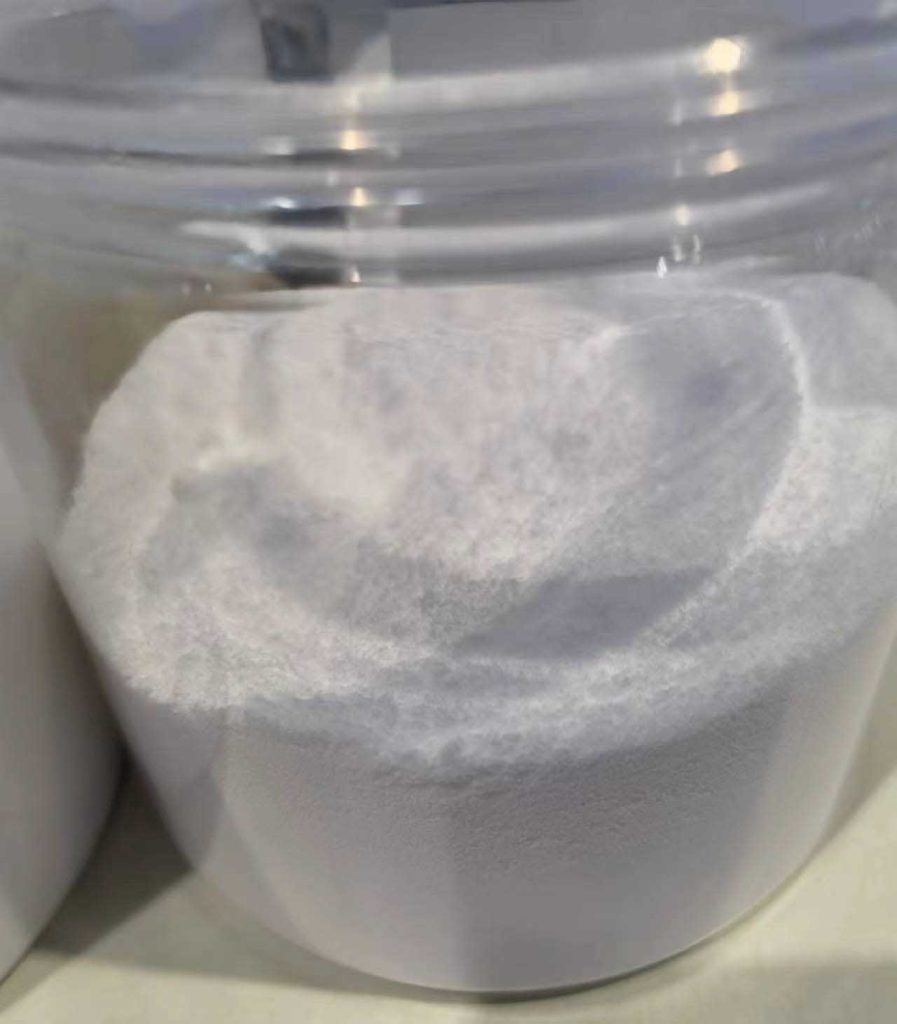Hydroxymethyl Cellulose
For Joint Filler/Crack Filler
Hydroxymethyl Cellulose stands as a important component within numerous tile grout applications in joint and crack filling. Commonly referred to as crack filler, tile grout finds its application in bridging gaps and fractures amidst building materials such as concrete, brick, and stone. Within this context, the integration of hydroxymethyl cellulose yields substantial enhancements in both performance and durability.
Characterized by its odorless nature and non-toxic attributes, hydroxymethyl cellulose emerges as a white powder that, when dissolved in cold water, transforms into a clear and highly viscous solution. This solution has commendable water retention and thickening properties.
To craft hydroxymethyl cellulose, premium refined cotton serves as the foundational raw material, undergoing an etherification reaction under alkaline conditions. This intricate process results in a versatile polymer renowned for its ability to augment the characteristics of joint fillers. Hydroxymethyl cellulose contributes to improved adhesion, workability, water retention, and resistance to cracking, thus elevating the overall quality of joint filler formulations.
What is hydroxypropyl methyl cellulose used for?
Hydroxymethyl Cellulose Tile Grout Description
Tile grout serves as a composite blend comprising cement, aggregate, and other essential constituents, among them being hydroxymethyl cellulose (HPMC). This amalgamation culminates in the formation of a multifaceted substance known for its remarkable attributes. The primary objective of tile grout is to yield a material that is not only water-resistant but also displays density and uniform coloration. This endows the grout with the capability to effectively fill gaps and reinforce existing structures, contributing to both the functional and aesthetic aspects of construction.
As a water-resistant polymer, hydroxymethyl cellulose significantly enhances the performance of the grout. This versatile ingredient is responsible for modifying the cement-based fine grout including pointing tile joints on both floors and walls within both internal and external areas. The chemical composition of hydroxymethyl cellulose imbues the grout with qualities that are conducive to enduring different environmental conditions.
Joint filling involves the utilization of chemical compounds to effectively bridge the gaps that emerge between structural elements or identical components within a given structure. This process is of paramount importance as it ensures structural integrity and aesthetic cohesion. By employing grout, particularly one enriched with hydroxymethyl cellulose, the endeavor of joint filling is fortified, enabling a seamless integration of various components and structures. The inclusion of hydroxymethyl cellulose in tile grout formulation underscores its significance in bolstering the overall efficacy and longevity of construction projects.
Tile adhesive is a specialized compound meticulously designed to serve as the bonding agent that adheres tiles to surfaces such as subfloors or walls. Its primary role is to establish a secure and durable connection between the tiles and the underlying substrate to ensure that the tiles remain firmly in place over time.
Tile Adhesive vs. Tile Grout | Hydroxyethylcellulose
Tile grout serves a different purpose in the tiling process. Grout or joint filler is primarily used to fill the gaps between tiles to create a cohesive and aesthetically pleasing surface. Beyond its cosmetic function, grout also plays a critical role in maintaining the integrity of the tiled area. It serves as a barrier that seals the spaces between tiles, effectively safeguarding against the infiltration of water, bacteria, and dust. This protective function is essential to prevent potential damage caused by moisture penetration and the accumulation of unwanted particles.
Both tile adhesive and grout share the commonality of containing hydroxymethyl cellulose within their formulations. The inclusion of hydroxymethyl cellulose in these compounds serves as a key factor in optimizing their performance. In tile adhesive, hydroxymethyl cellulose contributes to the adhesive strength, ensuring that tiles adhere securely to the designated surface. In grout, the hydroxymethyl cellulose content enhances water retention and viscosity, facilitating the formation of a consistent and impermeable barrier between tiles.
Hydroxypropyl Methylcullulose Specifications for Tile Grout
Hydroxymethyl cellulose is typically found in the form of a white or off-white powder. This visual characteristic ensures compatibility with the coloration of the grout material, allowing for a seamless integration into the overall aesthetic of the tiled surface.
Secondly, the water content of hydroxymethyl cellulose in tile grout formulations is required to be less than 5%. This low water content is crucial for maintaining the stability and shelf life of the grout mixture. The pH value of hydroxymethyl cellulose in tile grout is specified to fall within the range of 4.0 to 8.0. This pH range is conducive to the compatibility of hydroxymethyl cellulose with the other components of the grout mixture.
In terms of particle size distribution, a significant requirement is that 98% of the HPMC compound should pass through a 100-mesh sieve. This ensures a high level of homogeneity within the grout mixture, contributing to uniform dispersion and consistent performance during application.
Viscosity is a crucial property of hydroxymethyl cellulose in tile grout formulations. It is stated that a 2% solution of HPMC can yield a viscosity ranging from 170,000 to 200,000 mPa.s. This range of viscosity is instrumental in determining the flow characteristics and workability of the grout during application so the grout can be spread evenly and adhere effectively between tiles, while also providing the desired sealing properties.
Amazing Effects of Adding Hydroxy Propyl Methyl Cellulose in Tile Grout
The incorporation of Hydroxypropyl Methylcellulose HPMC or Hydroxypropylmethylcellulose HPMC into tile grout formulations yields a range of remarkable effects that contribute to the enhanced performance and overall quality of the grout product.
Slip Resistance Ensuring Tiles Stay in Place
Slip resistance is a paramount concern in areas where tiled surfaces are subjected to human foot traffic. When tiles lack adequate slip resistance, they become hazardous, especially in wet or high-traffic environments. The addition of HPMC to tile grout addresses this concern by enhancing the coefficient of friction between the tiles and the shoes, thus reducing the likelihood of slips and falls.
Hydroxymethyl cellulose formulated grout forms a strong adhesive bond between tiles and their substrate, resulting in a cohesive tiled surface that resists shifting or sliding. This cohesive effect is particularly advantageous in spaces like bathrooms, kitchens, or entryways where water or spills are common. By significantly reducing the risk of accidental slips, hydroxymethyl cellulose makes the tiled areas more secure for use.
Resistance to Shrinkage and Cracking
Shrinkage and cracking are common challenges encountered in grout as it cures and settles. These phenomena can mar the appearance of the tiled surface and compromise its durability. By incorporating HPMC into tile grout, these issues are mitigated significantly. Hydroxymethyl cellulose acts as a binder, contributing to the reduction of shrinkage as the grout dries and cures. This reduction in shrinkage translates to a minimized likelihood of unsightly cracks developing between tiles.
HPMC imparts elasticity to the grout, allowing it to flex and adjust to minor movements in the substrate or tiles. This elasticity is particularly important in areas subject to temperature variations or structural shifts. The presence of hydroxymethyl cellulose enhances the grout’s ability to accommodate these changes without fracturing or creating visible cracks.
Water Retaining
Hydroxymethyl cellulose serves as an effective water-retaining agent within the grout mixture. This means that it has the capacity to absorb and retain water, thereby maintaining the grout’s optimal consistency and workability over an extended period. When combined with water to form the grout mixture, HPMC ensures that the mixture remains sufficiently fluid for smooth and uniform application.
This water-retaining ability is also particularly advantageous in various scenarios. For instance, in large tiling projects or complex patterns, where the application process may take some time, hydroxymethyl cellulose-formulated grout remains in a workable state throughout, reducing the need for constant remixing. This attribute is also beneficial in instances where unavoidable interruptions occur during the application, as the grout retains its desired consistency, even if there’s a pause in the process.
Hydroxymethyl cellulose is also advantageous in environments prone to moisture exposure like tiles used in bathrooms or tiles in swimming pools and more. By retaining water, the grout remains workable for an extended period, allowing for smoother application and improved adherence between tiles.
Thickening and Easier Mixing
The addition of hydroxymethyl cellulose to tile grout imparts a thickening effect to the mixture. This increased viscosity not only contributes to the grout’s ease of application but also aids in filling gaps between tiles more effectively. The thickened consistency ensures that the grout maintains its form and structure during application, resulting in a neat and well-defined finish.
Hydroxymethyl cellulose facilitates the mixing process of tile grout components. Its inclusion promotes homogenous distribution and even dispersion of the various constituents, contributing to a consistent texture and performance throughout the grout mixture. This ease of mixing streamlines the preparation process, enhancing the efficiency of the application process.
Extend Open Time
The open time refers to the duration during which the grout remains workable after mixing, allowing for efficient application. Hydroxymethyl cellulose extends this open time, affording installers a more flexible window to apply the grout and arrange the tiles. This extension is particularly beneficial for larger tiling projects, intricate patterns, or situations where interruptions may occur during the installation process.
Adhering Strength Multiplies
Hydroxymethyl cellulose significantly bolsters the bonding capabilities of tile grout, resulting in a remarkable increase in adhering strength. This effect is particularly crucial in areas subjected to varying stresses, such as floors or walls that experience heavy foot traffic or external weather conditions. By fortifying the adhesion between tiles and their substrate, hydroxymethyl cellulose imparts a heightened level of stability, mitigating the risk of tiles dislodging over time.
The adhesive properties of hydroxymethyl cellulose not only secure tiles in place but also serve to distribute the load more evenly across the entire tiled surface. This even distribution minimizes the concentration of stress on individual tiles, which is a critical factor in preventing premature wear and tear. As a result, the installed tiles remain steadfast and resistant to unintended displacement or damage, showcasing the enduring benefits of hydroxymethyl cellulose contribution to adhering strength.
Hydroxypropyl Methyl Cellulose and Hydroxymethyl Cellulose,it plays a similar role in many application fields.


